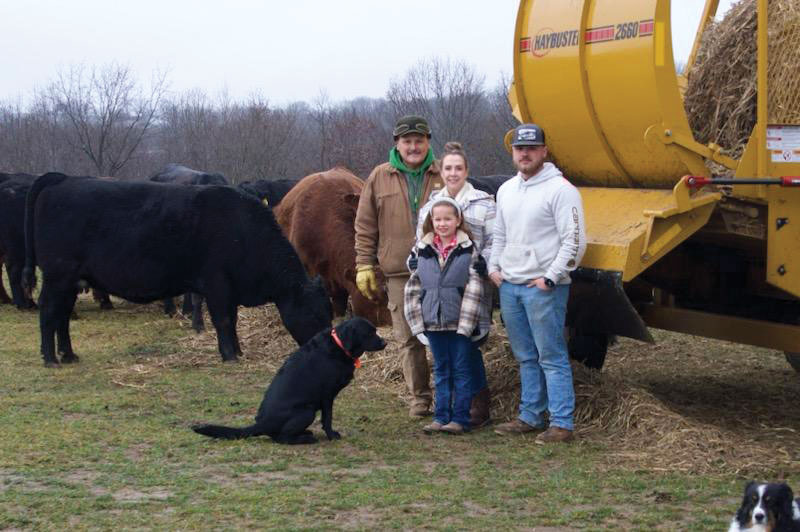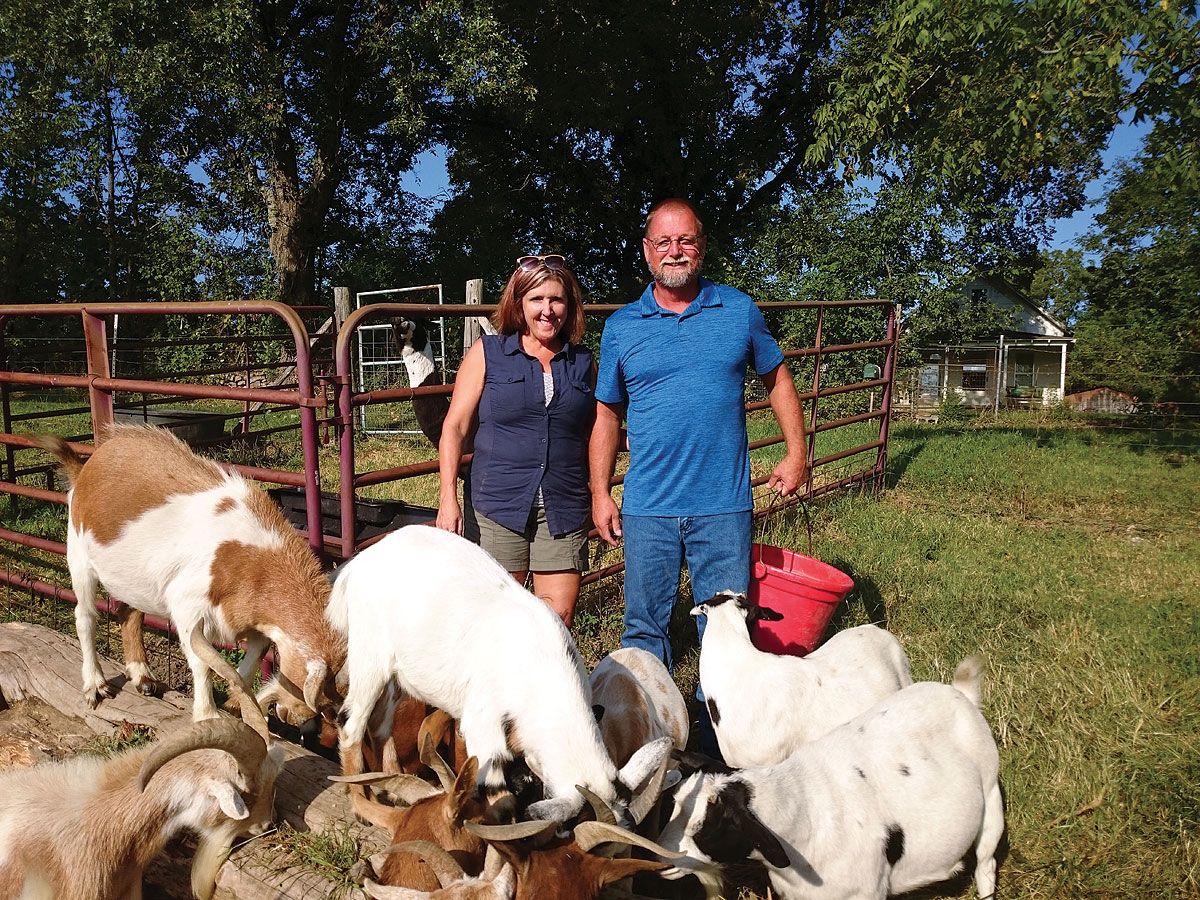
Family finds the climate in the Ozarks more hospitable for cattle production
CROCKER, MO. – Nearly seven years ago, Jim and Stephanie Bailey decided they had endured as many Montana winters as they could stand. With that decision, they moved from the Billings, Mont., area to 150 acres in Pulaski County, Mo., outside Crocker.
“Stephanie has relatives nearby, and we’ve been visiting here for years,” Jim said. “We just love this area, and we’ve said for a long time, when we were ready to leave Montana, this is where we wanted to be.”
They recently purchased a ranch along the Gasconade River, increasing their acreage to 550. They currently run about 70 head of commercial Angus and Red Angus cattle on their Top Wire Ranch.
“It takes a lot more acreage to raise cattle in Montana than here in the Ozarks,” Jim explained. “The land there is really dry and the grass is thin. There, we raised irrigated alfalfa and cattle. Here, we raise cattle, feeding fescue on our own pasture in the summertime. In the winter, it’s hay which we grow and bale ourselves. We feed that along with protein tubs. We also supplement with free-choice minerals, free-choice chopped corn, cottonseed, meal, and salt mix and then finish on grass.”
The Baileys’ son, Preston, is a part-owner-partner in the operation and works the ranch with them. Their 8-year-old granddaughter, Nevi, also helps out. Jim and Stephanie’s daughter, Morgan, still lives in Montana.
“There were a lot of elk in the area of our ranch in Montana, so we were always fixing the top wires on the fence, and so the name, Top Wire Ranch. When we came here, we brought the name, too. We still have a house in Montana but no more cattle.”
While it took more land to raise cattle in their native Montana, the Baileys are able to utilize forages more efficiently in Missouri.
“We do rotational grazing using a Razer Grazer, an all-in-one self-contained electric portable fencing option. You pull it with a four-wheeler and it holds up to a half mile of line. With two, one runs the machine, and the other sets the posts. It works really well for us.”
To further optimize forages, the Baileys utilize a bale processor.
“It grinds up the baled hay into 6-inch pieces, or whatever size you want, and really cuts down on the amount of wasted hay,” Jim explained. “If you ever look where hay bales are fed, the cattle trample and waste so much of it. You can also use this machine to mix different hays, and it will blow the dust out. If you have hay with a little mold in it, this will allow you to blow that out and mix it with other hay.”
Jim added that they purchased a new bale processor once they moved to Missouri.
“You don’t see a lot of these in this area, and a couple of our neighbors have been pretty interested in our bale processor,” Jim said. “We’ve really found it to be very useful as it allows you to use close to 100 percent of the hay.”
The majority of their Red Angus-sired calf crop is marketed through livestock auctions.
“Typically, we hold back a few select heifers to build up our own herd and cull one or two cows a year, but we send 30 to 35 calves annually to the sale barn. We generally send them off at about 550 pounds.”
With the addition of the second property, the Baileys plan to take advantage of the milder climate and expand their cattle operation in the coming years.
In addition to their cattle, the Baileys have operated a paving company for the past 35 years. They still own the company but have long-term employees operating it for them now. Preston works the ranch but also has an excavating company.
Finding a place to call home was Jim and Stephanie’s goal, and they believe the move, as well as all things in their lives, has been guided by a higher power.
“Our faith in the Lord has been a big part of our family and all that we do,” Jim said. “We want to give Him the glory because that is why and how we have been able to do all of this.






